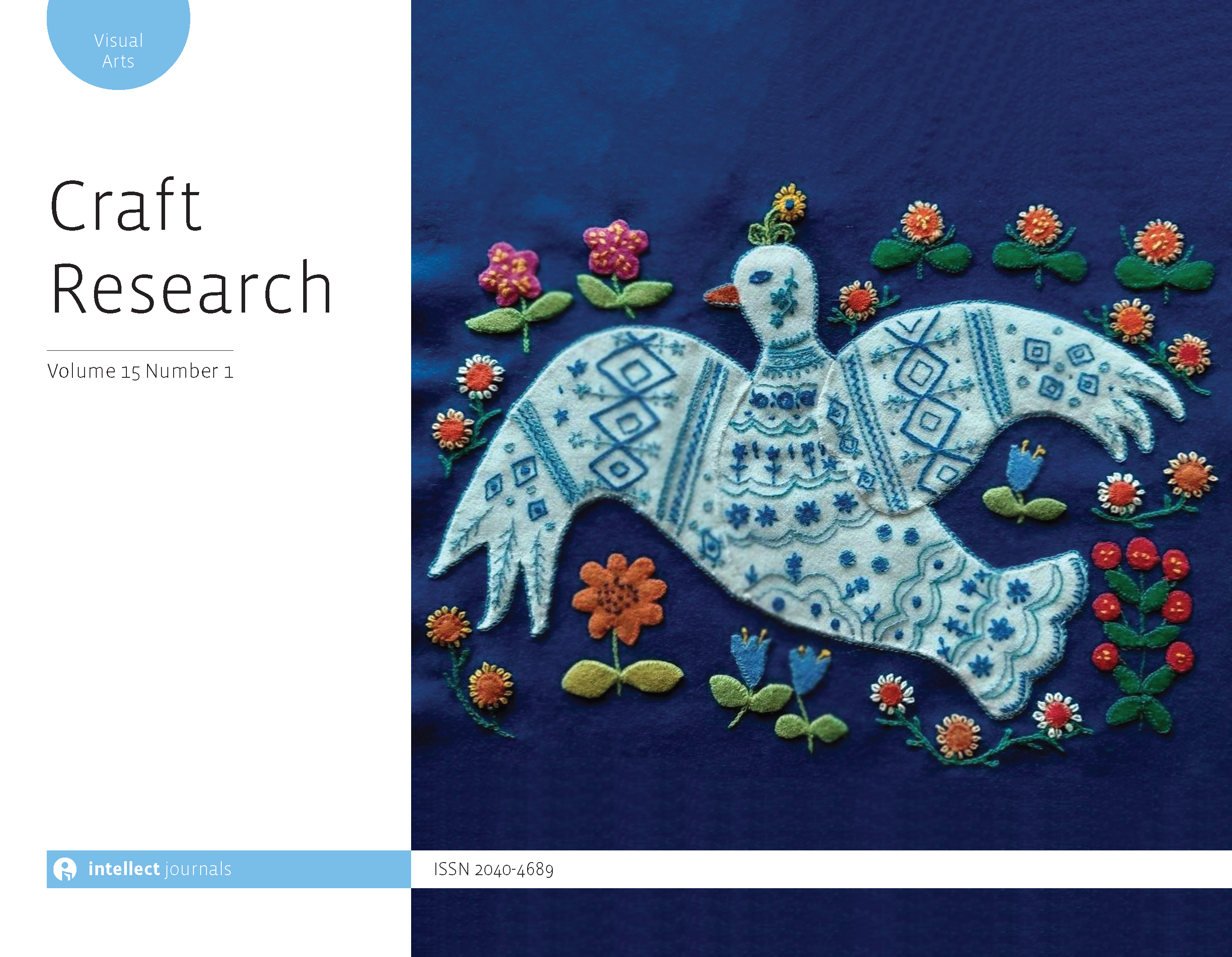
Full text loading...
 , Katja Vilhunen1
, Katja Vilhunen1
This study explores how Finnish craft hobbyists view their craft practice in a sustainable craft theory context. We collected the data for this study through an online survey in February and March 2021. We analyse the survey questionnaire data (N = 929) using exploratory factor analysis. The findings of the study show detailed information about craft hobbyists’ perceptions towards sustainable craft and reveal how craft hobbyists find sustainable crafts to be well-being-related activities that enhance meaning-making in their leisure time. This study also provides a sustainable craft measure framework for quantitative examination and analysis. The findings of the study can be utilized to understand sustainable behaviour through hobby crafts in the green transition.

Article metrics loading...

Full text loading...
References


Data & Media loading...

Publication Date:
https://doi.org/10.1386/crre_00117_1 Published content will be available immediately after check-out or when it is released in case of a pre-order. Please make sure to be logged in to see all available purchase options.